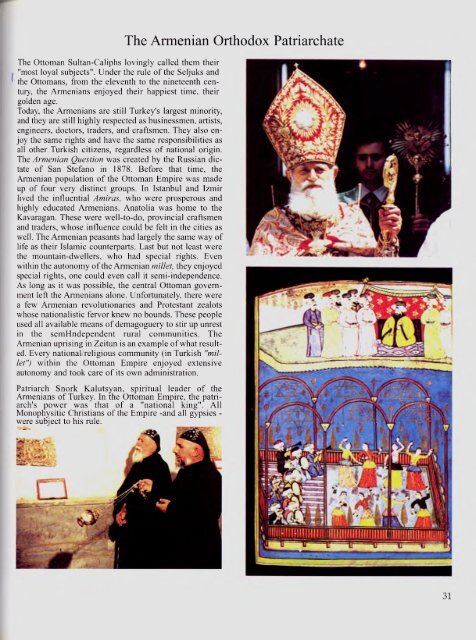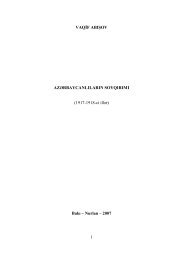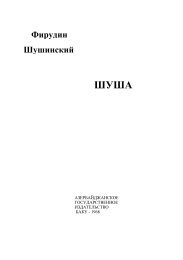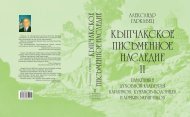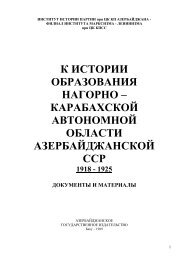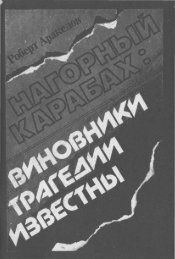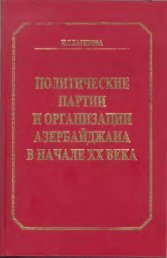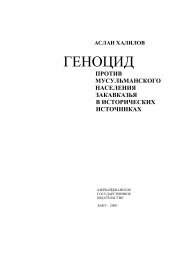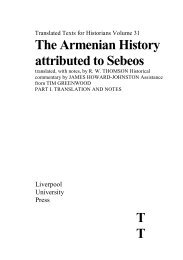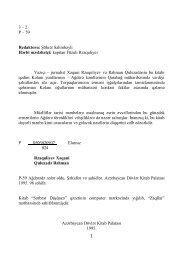ARMENIAN - Erevangala500
ARMENIAN - Erevangala500
ARMENIAN - Erevangala500
Create successful ePaper yourself
Turn your PDF publications into a flip-book with our unique Google optimized e-Paper software.
The Ottoman Sultan-Caliphs lovingly called them their<br />
"most loyal subjects". Under the rule of the Seljuks and<br />
the Ottomans, from the eleventh to the nineteenth century,<br />
the Armenians enjoyed their happiest time, their<br />
golden age.<br />
Today, the Armenians are still Turkey's largest minority,<br />
and they are still highly respected as businessmen, artists,<br />
engineers, doctors, traders, and craftsmen. They also enjoy<br />
the same rights and have the same responsibilities as<br />
all other Turkish citizens, regardless of national origin.<br />
The Armenian Question was created by the Russian dictate<br />
of San Stefano in 1878. Before that time, the<br />
Armenian population of the Ottoman Empire was made<br />
up of four very distinct groups. In Istanbul and Izmir<br />
lived the influential Amiras, who were prosperous and<br />
highly educated Armenians. Anatolia was home to the<br />
Kavaragan. These were well-to-do, provincial craftsmen<br />
and traders, whose influence could be felt in the cities as<br />
well. The Armenian peasants had largely the same way of<br />
life as their Islamic counterparts. Last but not least were<br />
the mountain-dwellers, who had special rights. Even<br />
within the autonomy of the Armenian millet, they enjoyed<br />
special rights, one could even call it semi-independence.<br />
As long as it was possible, the central Ottoman government<br />
left the Armenians alone. Unfortunately, there were<br />
a few Armenian revolutionaries and Protestant zealots<br />
whose nationalistic fervor knew no bounds. These people<br />
used all available means of demagoguery to stir up unrest<br />
in the semHndependent rural communities. The<br />
Armenian uprising in Zeitun is an example of what resulted.<br />
Every national/religious community (in Turkish "millet")<br />
within the Ottoman Empire enjoyed extensive<br />
autonomy and took care o f its own administration.<br />
Patriarch Snork Kalutsyan, spiritual leader o f the<br />
Armenians o f Turkey. In the Ottoman Empire, the patriarch's<br />
power was that o f a "national king". All<br />
Monophysitic Christians of the Empire -and all gypsies -<br />
were subject to his rule.<br />
The Armenian Orthodox Patriarchate<br />
31


